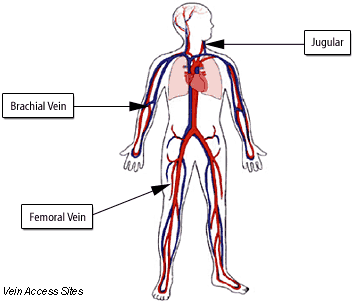What to expect before, during and after the procedure
Read this information carefully and discuss any questions or concerns you have with your doctor.
- Your procedure will be performed in the heart catheterization laboratory, or "cath lab." You will lie on an X-ray table, and an X-ray camera will move over your chest during the procedure. The staff will monitor your heart by attaching several small sticky patches to your chest.
- Your doctor will give you an anesthetic. It may be general or local. This will depend on the technique the doctor uses to place the device. There should not be significant discomfort.
- Your doctor may place an imaging probe in your mouth and move it down into your esophagus. This imaging probe makes it possible for the doctor to see your heart up close with an echocardiography machine.
- Your doctor will insert a catheter through a vein, and then navigate it through some of your body’s largest veins until it reaches your heart. The doctor will perform a procedure (angiogram) to visualize your heart and the PFO.

- Your doctor will then measure the pressure and oxygen content in different chambers of your heart.
- The appropriate size device is screwed onto a cable, put into a special catheter and advanced through you PFO. Your doctor will then push the device out of the catheter until the discs of the device sit on each side of the PFO.

- Your doctor carefully studies the device's position in your heart. When your doctor is satisfied with the device position, the device is released by unscrewing the cable that was used to slide it through the catheter. The AMPLATZER PFO Occluder is now implanted in your heart.

- The catheter and imaging probe (if used) are removed and the procedure is completed.
The procedure generally takes 1-2 hours. The procedure is less invasive than open-heart surgery. Many patients have the procedure done in the morning and go home at the end of the day or the following morning.
What To Expect After The Procedure
After recovery from anesthesia and bed rest, you should be able to sit up and walk about. If there are no complications, you may go home that day or stay overnight in the hospital. Before you leave the hospital, a chest X-ray and/or echocardiogram will be performed to make sure the device is still positioned properly.
Because the procedure is less invasive than open-heart surgery, your recovery should be easier. You may have an adhesive bandage where the catheter was inserted. You also may have a sore throat if an imaging probe was used.
Before you leave the hospital, your doctor will give you guidelines for activities and medications. Your doctor should tell you when you can resume normal daily activities. Medications will be an important part of your treatment. Your doctor will prescribe drugs that you should take at home. The drugs should prevent blood clots from forming. Notify your doctor if your medications cause unpleasant reactions, but do not stop taking them unless instructed to do so. Your doctor may be able to prescribe new medications that better suit you.
You will be required to take medication every day for the next 6 months to help prevent blood clots (antiplatelet/anticoagulation) and will be required to take antibiotics for certain medical procedures to minimize the risk of infection of the device. The decision to continue taking medication beyond 6 months is at the discretion of your doctor.
It is important to keep all follow-up appointments that are scheduled for you. You will have to return to your doctor for periodic follow-up visits over the next year.
Copyright © 1997-2003, AGA Medical Corporation, Golden Valley, Minnesota, USA. All rights reserved.All information is sole property of AGA Medical Corporation.